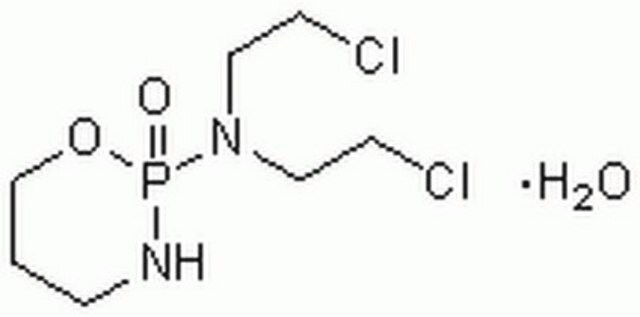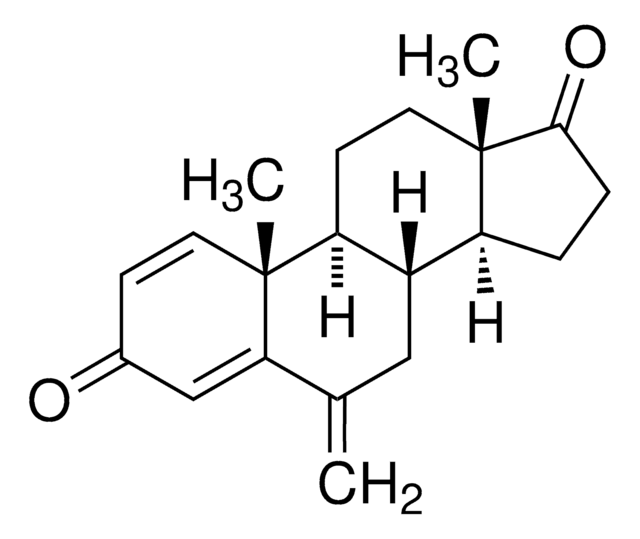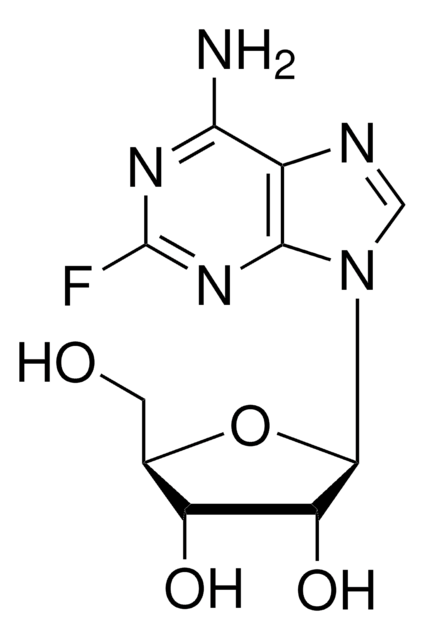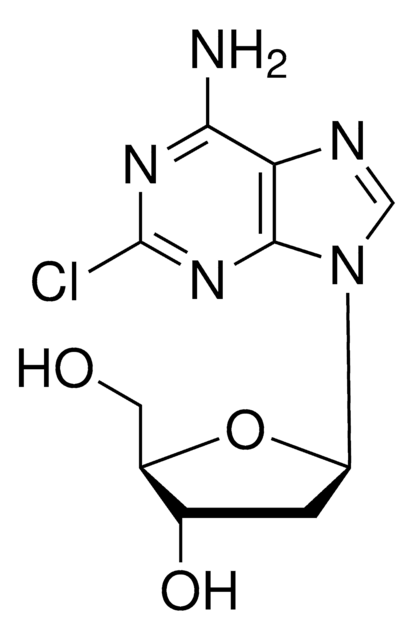SML0653
Capecitabin
≥98% (HPLC)
Synonym(e):
5′-Deoxy-5-fluor-N-[(pentyloxy)-carbonyl]-cytidin, Ro-9-1978
About This Item
Qualitätsniveau
Assay
≥98% (HPLC)
Form
powder
Optische Aktivität
[α]/D +80 to +100°, c = 0.5 in methanol
Farbe
white to beige
Löslichkeit
H2O: 10 mg/mL, clear (warmed)
Lagertemp.
2-8°C
SMILES String
O[C@H]1[C@@H](O)[C@H](N2C(N=C(NC(OCCCCC)=O)C(F)=C2)=O)O[C@@H]1C
InChI
1S/C15H22FN3O6/c1-3-4-5-6-24-15(23)18-12-9(16)7-19(14(22)17-12)13-11(21)10(20)8(2)25-13/h7-8,10-11,13,20-21H,3-6H2,1-2H3,(H,17,18,22,23)/t8-,10-,11-,13-/m1/s1
InChIKey
GAGWJHPBXLXJQN-UORFTKCHSA-N
Angaben zum Gen
human ... TYMS(7298)
Suchen Sie nach ähnlichen Produkten? Aufrufen Leitfaden zum Produktvergleich
Anwendung
- in combination with gemcitabine to achieve glutamine deprivation by enhancing the sensitivity of expression in pancreatic ductal adenocarcinoma (PDAC) cells to inhibitors of glutamine metabolism and study its effect on PDAC cell survival
- to study the drug metabolic function in a two-organ microfluidic system
- as an anti-cancer agent to study its cytotoxic activity alone or in combination with B87 on cancer cells
Biochem./physiol. Wirkung
Signalwort
Danger
H-Sätze
Gefahreneinstufungen
Carc. 1B - Muta. 2 - Repr. 1B
Lagerklassenschlüssel
6.1C - Combustible, acute toxic Cat.3 / toxic compounds or compounds which causing chronic effects
WGK
WGK 3
Flammpunkt (°F)
Not applicable
Flammpunkt (°C)
Not applicable
Analysenzertifikate (COA)
Suchen Sie nach Analysenzertifikate (COA), indem Sie die Lot-/Chargennummer des Produkts eingeben. Lot- und Chargennummern sind auf dem Produktetikett hinter den Wörtern ‘Lot’ oder ‘Batch’ (Lot oder Charge) zu finden.
Besitzen Sie dieses Produkt bereits?
In der Dokumentenbibliothek finden Sie die Dokumentation zu den Produkten, die Sie kürzlich erworben haben.
Kunden haben sich ebenfalls angesehen
Unser Team von Wissenschaftlern verfügt über Erfahrung in allen Forschungsbereichen einschließlich Life Science, Materialwissenschaften, chemischer Synthese, Chromatographie, Analytik und vielen mehr..
Setzen Sie sich mit dem technischen Dienst in Verbindung.





